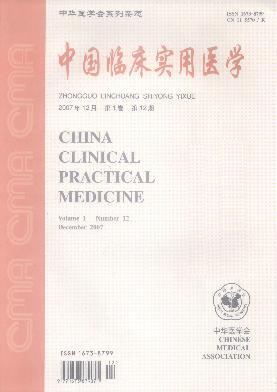Effect of mechanical ventilation mode on intra-and postoperative blood loss in patients undergoing posterior lumbar interbody fusion surgery
引用次数: 1
Abstract
Objective To investigate the effect mechanical ventilation mode on intra-and postoperative blood loss in patients undergoing posterior lumbar interbody fusion (PLIF) surgery. Methods According to the random number table method, a total of 88 patients scheduled to undergo lumbar spine surgery were randomly divided into two groups. Patients were received pressure controlled ventilation and volume controlled ventilation in pressure controlled ventilation (PCV group, n=44) and volume controlled ventilation (VCV group, n=44). Mean arterial pressure (MAP), heart rate (HR) and central venous pressure (CVP) were monitored at the onset of anesthesia induction (T0), 10 min after supine position to prone position (T1) and skin closure immediately (T2), 10 min after prone position to supine position (T3) and when tracheal extubation (T4) respectively, and were determined at the above time points of two groups of hemoglobin (Hb) and hematocrit (Hct). The respiration parameters were recorded from T0 to T3. The indicators were recorded in the two groups as following: the volume of intranperative blood loss, 72 h postoperative blood loss, the volume of allogeneic blood transfusion, the volume of fluid input and the rate of re-operation for stopping the bleeding. Results Compared with VCV group, peak inspiratory pressure (PIP) were all lower increasingly from T1 to T3 in PCV group (P 0.05). The differences of Hb and Hct at different time points between the two groups have no statistical significance (P>0.05). Compared with VCV group, the volume of intranperative blood loss, the amount of transfused plasma and red blood cells were all notably lower in PCV group (P>0.05). Conclusion Intraoperative PCV can decrease intraoperative blood loss in patients undergoing PLIF, which may be related to lower intraoperative peak inspiratory pressure. Key words: Pressure controlled ventilation; Volume controlled ventilation; Lumbar spine surgery机械通气方式对后路腰椎椎体间融合术患者术后出血量的影响
目的探讨机械通气方式对后路腰椎椎体间融合术(PLIF)患者术后出血量的影响。方法将88例拟行腰椎手术的患者按随机数字表法随机分为两组。患者分别接受控压通气(PCV组,n=44)和控气量通气(VCV组,n=44)。分别在麻醉诱导开始时(T0)、仰卧位转仰卧位后10min (T1)和即刻闭合皮肤后10min (T2)、俯卧位转仰卧位后10min (T3)和拔管时(T4)监测平均动脉压(MAP)、心率(HR)和中心静脉压(CVP),并测定两组血红蛋白(Hb)和红细胞压积(Hct)在上述时间点的变化。从T0到T3记录呼吸参数。记录两组患者术中失血量、术后72 h失血量、输异体血量、输液量、再手术止血率。结果与VCV组比较,PCV组患者在T1 ~ T3阶段呼吸峰值压强(PIP)均呈下降趋势(P < 0.05)。两组患者不同时间点Hb、Hct差异无统计学意义(P < 0.05)。与VCV组比较,PCV组术中出血量、输血浆量、红细胞量均显著降低(P < 0.05)。结论术中PCV可减少PLIF患者术中出血量,这可能与术中吸气峰值压较低有关。关键词:压控通风;容积控制通风;腰椎手术
本文章由计算机程序翻译,如有差异,请以英文原文为准。
求助全文
约1分钟内获得全文
求助全文

 求助内容:
求助内容: 应助结果提醒方式:
应助结果提醒方式:


